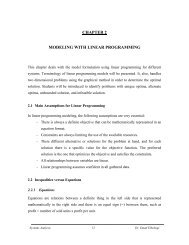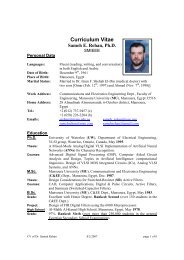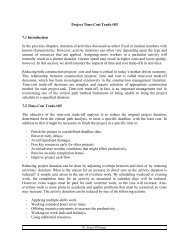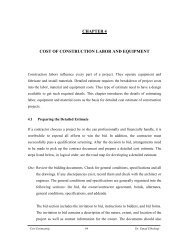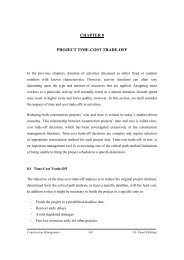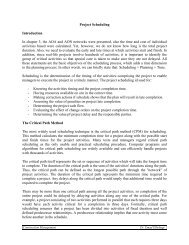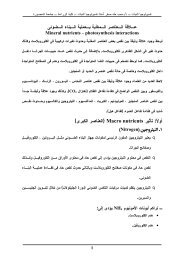Thyroid and Parathyroid
Thyroid and Parathyroid
Thyroid and Parathyroid
Create successful ePaper yourself
Turn your PDF publications into a flip-book with our unique Google optimized e-Paper software.
Most thyroid nodules are benign <strong>and</strong> are colloid nodules or adenomas. To distinguish<br />
between suspicious thyroid nodules that may be malignant <strong>and</strong> benign thyroid<br />
. nodules, certain issues should be considered<br />
Because 40 percent of patients with a solitary nodule or multiple thyroid nodules with<br />
a history of previous head <strong>and</strong> neck irradiation will have cancer of the thyroid gl<strong>and</strong>, a<br />
history of external radiation to the head or neck is important. The age <strong>and</strong> gender of<br />
the patient are also important. <strong>Thyroid</strong> nodules in children <strong>and</strong> elderly patients are<br />
more likely to be malignant. Solitary nodules also are more common in men over 40<br />
<strong>and</strong> women over 50 years of age. Signs that should prompt concern are rapid<br />
enlargement of an old or new thyroid nodule, symptoms of local invasion (e.g.,<br />
unilateral vocal cord paralysis), or compressive symptoms (e.g., dysphagia <strong>and</strong><br />
.( dyspnea from invasion into the trachea <strong>and</strong> esophagus<br />
Approximately 15 percent of solitary thyroid nodules are malignant, <strong>and</strong> in hard<br />
solitary thyroid nodules the risk of malignancy is two or three times higher. When the<br />
apparently solitary nodule is found to be a dominant nodule in a multinodular thyroid<br />
gl<strong>and</strong>, the incidence of thyroid cancer in this nodule is less than 5 percent. An<br />
exception to this is a history of previous head <strong>and</strong> neck irradiation or a history of<br />
familial thyroid cancer. Lesions that are hard, gritty, or fixed to surrounding structures<br />
such as the trachea or strap muscles are probably malignant. The presence of palpable<br />
cervical lymphadenopathy adjacent to a thyroid nodule should be suspected as a<br />
carcinoma. Cervical lymphadenopathy because of metastatic thyroid cancer may be<br />
present when no thyroid nodule is palpable. These patients almost always have a<br />
thyroid cancer that usually is present in the ipsilateral thyroid lobe. This cancer may<br />
. be microscopic <strong>and</strong> demonstrated only after careful sectioning of the thyroid gl<strong>and</strong><br />
Investigations<br />
Fine-Needle Aspiration Cytology<br />
The procedure of choice in evaluating thyroid nodules is fine-needle aspiration<br />
cytology (FNAC). The test is fast, is minimally invasive, has few risks, causes little<br />
discomfort to the patient, <strong>and</strong> has been shown to be specific <strong>and</strong> sensitive. It has<br />
replaced radionuclide <strong>and</strong> ultrasonographic imaging in the preoperative evaluation of<br />
. thyroid nodules<br />
Ninety percent of nodules can be categorized into the following groups: benign, 65<br />
percent; suspicious, 15 percent; malignant, 5 percent; <strong>and</strong> nondiagnostic, 15 percent.<br />
The incidence of false-positive results is about 1 percent, <strong>and</strong> false-negative results,<br />
. about 5 percent<br />
FNAC is the investigation of choice in patients with thyroid nodules, but it has<br />
limitations. The proportion of patients with suspicious cytology results ranges from 11<br />
to 20 percent. Most have follicular or Hürthle cell neoplasms, <strong>and</strong> 20 percent of these<br />
patients have a thyroid malignancy. There is no accurate method of predicting which<br />
of these patients has a thyroid cancer, because the diagnosis depends on<br />
demonstrating capsular or vascular invasion, which is not possible on FNAC. The<br />
technique also is less reliable in patients who have previous irradiation to the head <strong>and</strong><br />
neck or have a family history of thyroid cancer, as many of these patients have<br />
.<br />
multifocal lesions



